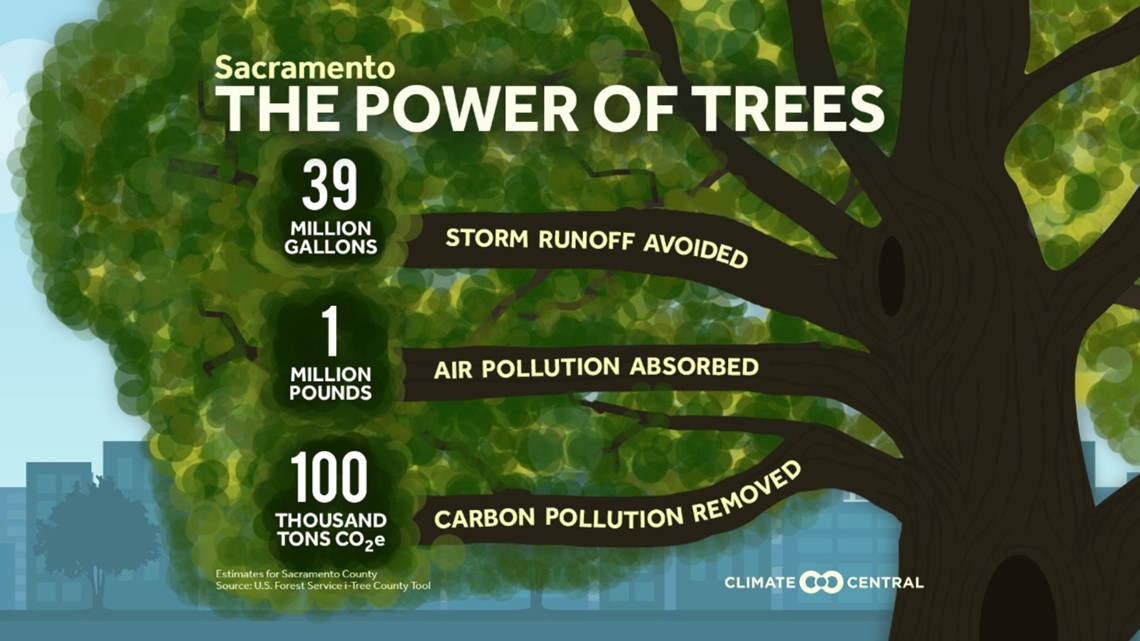SACRAMENTO, Calif. —
With a hot weekend on tap that will be acting as a preview for another hot Sacramento summer, the numerous benefits of trees begins to stand out.
Sacramento has long been known as the “City of Trees” due to its extensive urban canopy.
A tool developed by MIT, known as Treepedia, compiled urban forestry data from cities around the world and evaluated canopy data into their Green View Index. Sacramento has a Green View Index of 23.6%, ahead of cities like Seattle, Miami, New York, and even Paris, which has long been lauded for its trees.
Dr. Vivek Shandas is a professor of climate adaptation at Portland State University focusing on urban forestry and is no stranger to the City of Trees. He has worked with several tree-related organizations throughout the region.
The first benefit of trees, he pointed out, was the role they play in cooling things down when temperatures soar in the summer.
“Trees are really important in urban areas for (what) really comes down to three reasons. The first is just human health and well-being. Trees shade the community. Sacramento can get really hot in the summer, as we all know, and having those large elm trees, for example, are really helpful to be able to provide shade to that local community,” he said.
Urban trees create a 7% reduction in the energy used for heating and cooling U.S. homes, according to North Carolina State University. The benefits of trees however provide extend far beyond shade.
"The second thing that trees provide is really a lot of social health and well-being. So, we actually see places that have more trees, people are more connected, they trust one another a bit more," said Dr. Shandas. "The third is really when we start thinking about trees and cities. It brings up questions of equity and distributional equity, primarily, South Sacramento has far fewer trees than other parts of Sacramento, for example."
Inequity plays a significant role in where urban forests are located. Dr. Shandas points out that lower income areas have less tree cover due to lack of investment in these areas. It's often difficult to plant trees in these areas due to extensive concrete cover which only helps in raising temperatures during heatwaves.
"If a community is talking about hotter summers, and how they're really having trouble coping, we could talk about what a west facing tree or a south facing tree around their residence might actually do for cooling the temperatures in and around their homes," said Dr. Shandas.


The impacts of climate change and drought have helped spur renewed interest in urban forestry. In fact, the federal government is putting $1.5 billion towards developing more tree cover in historically underprivileged areas and sustaining urban forests in areas where they already exist.
"The question of why now," remarked Dr. Shandas about the renewed interest in the importance of urban forestry, "It really comes down to an intersection of the climate crisis of all the challenges we're seeing in cities and communities, with with flooding, with heat waves. It comes down to historic injustices that have been in place for a very long time and trying to find ways to write those past wrongs, and I know Sacramento is going to be front and center with this."
WATCH ALSO:



















